The Dioscorea Dilemma: Which ones are edible, and what parts?
One wouldn’t think wild yams would be hard to sort out. It only took me about a dozen years.
I’m not talking about anything related to the sweet potato. That’s the Ipomoea family. I’m talking about real yams, in the Dioscorea family. Like many imported plants into warm climates, the Dioscorea (Dye-os-KOH-ree-uh or in Greek thee-oh-skor-REE-uh) have become an invasive weed. And as you know, the motto here is eat the weeds. Let’s see if we can sort them out. There are three escaped yams locally. I call them Yam A, Yam B and Yam C.
The most common yam in the South is, unfortunately, probably the least edible, Yam B, the Dioscorea bulbifera — B for bulbifera (bul-BIFF-er-ra.) It was first sent to Orlando in 1905 as a possible ornamental and food crop. The fellow who got the D. bulbifera concluded it was dangerous to Florida but didn’t eradicate while he had the chance. It has since escaped and become a scourge of the countryside. I have not personally proven its edibility. I have a separate article elsewhere on this site called “Yam B: The Bulbifera.” Yam C is the Chinese Yam or the Cinnamon vine yam. It’s botanical name is Dioscorea polystachya (mistakenly called D. oppositifolia.) It is covered in a different article as well. Yam C: The Chinese. This article is about Yam A, Dioscorea Alata — A for Alata uh-LAY-tuh. It is also called the Winged Yam because its stem is very square.
Yam A, or the winged yam, is also called the “water Yam” the “great yam” the “lesser yam,” and the “purple yam” among others. It’s not born free anywhere in the world but is a product of cultivation that has escaped into the wild. Researchers think it was an intentional hybridizing of two wild yams by man some 8,000 years ago. So while Yam A, the D. alata, is found in the wild, it is not a wild yam.
Under cultivation, varieties of D. alata are the most common yam in the world. It has an underground root that can grow upwards of 7.5 feet long and a 136 pounds (the known record is 180 pounds.) When cultivated it can grow long and uniform. In hard soil, or in old age, it can be lumpy and malformed. Young roots tend to be solid and straight, older roots tend to branch out. Boiling (or roasting) of the root makes it edible. It got to Africa from Asia around 1,500 B.C. and probably came to the Americas with slaves by the 1700s. By the 1950s D. alata was the most common Yam in the state. The D. bulbifera did not take over for a few more decades.
At first glance Yam A, the D. alta, and Yam B, the D. bulbefera, look quite alike but they have several differences. D. alata’s leaf is an arrow-shaped heart (think arrow-Alata) D. bulfiera is a ball-shaped heart (think ball-bulifera). The D. alata leaves grow in pairs particularly near the growing end of the vine where as young D. alatas can have one leaf instead of leaves in pairs, the D. bulbifera singly. The D. alata has a large, very square stem with edges tinged in purple, the D. bulbifera has a slight round green stem. The D. alata has bulbils that are dark brown with a variety of shapes, the D. bulbifera has bulbils that are lumpy round and tan (from Asia I think) or round and brown with tan pimples (from Africa I think). Incidentally, D. alata bulbils soaked 4 hours in water germinate three weeks faster than non-soaked bulbils.
The D. alata, when climbing at eye level, twists from your lower left across the surface nearest you to your upper right, the so-called Z-twist. The D. bulbifera twists from your lower right across the surface nearest you to your upper left, the S-twist. I am beginning to think the way of the twist is the first sign of a prime edible yam. Ignore books that say a vine twists clockwise or counter clockwise if they don’t provide you the perspective of the viewer. Depending whether you are looking down or up the same twist can be called clockwise or counter clockwise. If you are looking down at a D. alata it looks to go counter clockwise. If you’re looking up at the D. alata it appears to go clockwise. I have two books that describe its twist in different directions because of the perspective.
Once you learn to tell the differences the D. alata (as well as Yam C, the Chinese Yam) are fairly easy to spot among their prolific relative, the D. bulbifera. Yam A and Yam C (the Chinese Yam) leaves give them away even at a distance since they grow in pairs. The D. bulbifera has alternating single leaves so from a distance if you see single leaves like a series of steps in a stairs you know it’s not the one you want. As for availability… along one bike trail I traverse, for one mile all the trees are draped with Yam B. But, there are three patches of Yam A. Yam C is in very isolated pockets.
While the D. Alta has a reputation for being buried very deep that has not been my experience. I usually find the large root within a few inches of the surface. When grown in soft soil the D. alata is long and tubular, when growing in hard soil it will be lumpy and distorted. Old roots can also be lumpy and banched. The largest I have found to date is 8.2 pounds after washing, and that is the norm. Young roots are best used like potatoes, older roots while edible have a different texture, can be fried after boiling or make a good flour. The vine usually puts on one tuber per season but can produce as many as three. Thus the older root can be lumpy but have a younger, well-formed root attached, as the top picture shows.
When under cultivation the D. alata is usually left to cure for a week after it is dug up, but that’s not necessary, and it will store for several months. The vine also go into a dormant period. Here in Florida that is about Christmas to St. Patrick’s Day. During that time the vines die back. If you want to dig them up during that time you should mark them earlier in the season. The U.S. Department of Agriculture reports the bulbils of the D. alata are edible cooked but not as palatable as the roots, and my friend, Maribou, has tried them. I, personally, have not gotten around to eating them. It’s on my list of plant things to do.
Dioscorea was named after Pedianos Dioscorides, Greek physician of the first century AD whose book on medicinal herbs Materia Medica, was a standard work until recent times. Alata means winged. Bulbifera means bearing bulbs. Polystachya, many stakes, or blossom spikes.
For the record, among the semi-edibles yams one might see are: Dioscorea villosa, (vill-LOE-suh) whose roots might be a famine food but with a price. This was the yam from which the first birth control pills were made. There has been some speculation that the Mayans suffered a loss of their maize crop and had to eat D. villosa, causing a fertility drop in their population they could not recover from. (It twines lower right to upper left, the S-twist.) There are also native Florida yams, but they are rare and have no “bulbils” Dioscorea floridana and Dioscorea quarternata. The native plants are only infrequently seen in north and west Florida hammocks and flood plains. Villosa means shaggy; floridana, Florida; quarternata, four leaves from one place; polystachya many spikes. The word “yam” comes from a west African language and means “something to eat.”
Approximate yam nutrition per 100g: 103 calories; sugars (g) 23; Proteíns (g) 1; Fiber (g) 4; Vitamin B1 (mg) 112; Vitamin B2 (mg) 32; Vitamin C (mg) 17; Salt (mg) 9; Potássium (mg) 816; Cálcium (mg) 17; Phosphorus (mg) 55. It does not have any iron, fat, vitamin A, and no vitamin B3.
Green Deane’s Itemized” Plant Profile
IDENTIFICATION: Dioscorea alata: Winged Yam. Large arrow-shaped leaves, opposite, stem with four definite sides, edges of the sides often tinged in purple. Stem climbs from lower left to upper right. Bulbils dark brown, round or cylinder, lumpy, mishapen. Underground root similar to a sweet potato in shape when grown is soft soil, lumpy and distorted when grown in hard soil. Can be up to 136 pounds.
TIME OF YEAR: Fall, September to December. For two months the vine dies back making locating difficult.
ENVIRONMENT: Yams do well in sun or partial shade and prosper with ample rainfall. They require good drainage, and therefore, are often planted on mounds or ridges.
METHOD OF PREPARATION: Underground roots only: Usually fresh young yam is peeled, cut up and boiled like a potato. Older yams can be pounded into a sticky elastic dough called pounded yam or yam fufu. To make a flour from the D. Alata root slice the underground tubers to a thickness of about quarter inch. Parboil the peeled slices. Dried them in the sun to reduce the moisture content. The dried slices are then ground to flour and sieved to make a uniform texture. Otherwise, the boiled yam can also be used like potatoes. IF ANY YAM TASTES BITTER, DON’T EAT IT.

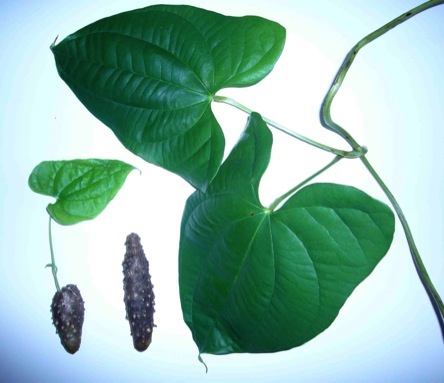
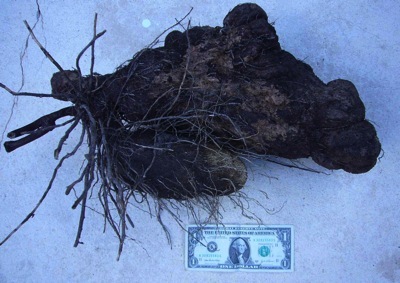
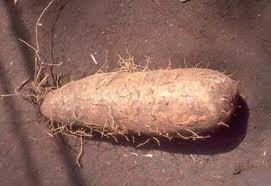
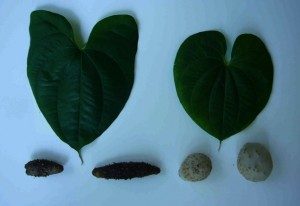
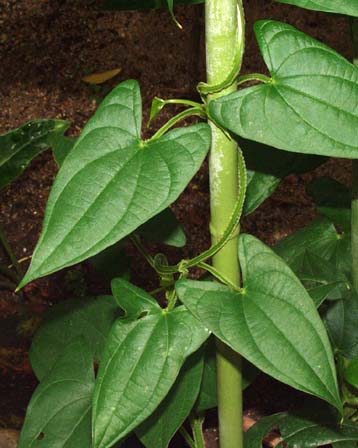
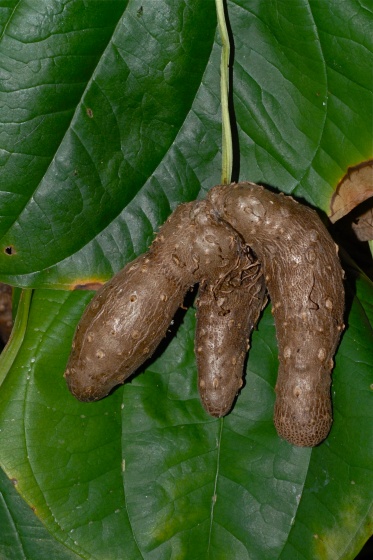
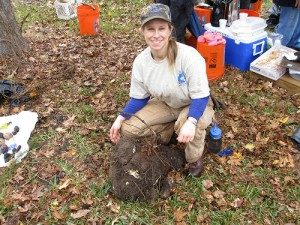
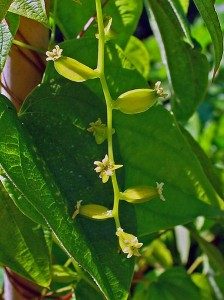

Can you harvest part of the root so as not to kill the plant for future harvest?
Thank you for your time and knowledge.
Yes, in fact it often grows in separate sections adding them depending upon the season.
Can the bulblets be planted to propagate it? A suggestion, in addition to ITEM-IZING plants, cover Propagation if there is time or in the written articles. If we can’t propagate the plants, we are done for in the long run…..thanks for all the great articles and vids.
Yes they can… hmmm… propagation never really came into it because weeds do it so well themselves. I can add it over time… I mean.. with nearly 500 articles and 1,000 species it takes time to make changes.
Hi! I’m Allen and i’m 15. I am very interested in self reliance and have found your videos and websites extremely helpful. Using your site I have made a yucca rope hammock, snares made with yucca, blackberry cobbler and jam. As I said before your website was extremely instrumental and is the only real wild Florida plant guide I could find. Thanks!
On another note…I would like to start cultivating some plants. I already have 8 blackberry bushes and 16 yuccas growing. I would like to expand and add something starchy. I live in Gainesville and have 5 acres of land…Could I have some of these yams on my property or somewhere in the vicinity? Thanks in advanced!
The short answer is yes, and I sent you a message about that.
I’m from gainesville too and have alata randomly growing in my backyard if you want some.
interesting research. comparisons of yams, particularly yam “a” or the d. alata, purple yam/winged yam
http://www.scribd.com/doc/34858900/Dioscorea-Alata-Flour
enjoy
Some days it seems like everything edible is in Florida…
I’ll have to disagree with you. As someone who forages the Catskill Mountains and most of Vermont…. it seems like everything in Vermont and the Catskills is edible. :-)….oh, minus the snakes, bugs and poison ivy of course.
I mostly pick mushrooms….but love to forage for food. This site…. is my dream.. since I don’t know much about Florida plants in general…….yet.
you have so much info to share do you have a ebook pdf that has your archive
working on one.
Hello I was on your class in Cassadaga on Saturday, sure enjoyed the walk and learning about the good things to eat. Today i dug up the D. alata yam that has been growing on my fence for many years, altho it is dead and the vine no longer touches the ground, but i did see where it might have gone into the ground, dug there and found a nice root about the size of a regular sweet potato. Washed it off and took a little taste, it was surprisingly tender for being such an old plant, had no particular taste, and kinda sticky, i will try boiling it and see what it taste like than. I read as much as i could about it, could it be planted like a regular crop in the garden? and dug up each year? Third question how do you prepare a Cicada? As i am sure if their 17 year hibernation is over we will have our share in Florida also. Don’t really think i will eat any, i just love the little bugs and the way when you hold them by their tails their wings just go so fast they buzz.
hi! since three year we are trying to grow the yams but we they always got frozen, could you please help us? thank you! we loved your clips.
Young winged yams vines start out with single leaves then later double up.
i have a plant that looks like this but has orange yellow flowers – are there any flowers on Dioscorea spp and if so what color are they?
Dioscorea so have flowers but they are small and irrelevant.
Where can I get the seed for the D. alata to grow? I read on a website it is poisonous. You mention “When under cultivation the D. alata is usually left to cure for a week after it is dug up”, what do you mean by cure? I tried searching the web but they only provided wild yam, I believe that is the Yam C you mentioned above.
Usually one does not grow the yams from seed but rather from the air bulbils. Many root vegetables are left to sit out of the sun for a week after being dug up. Sweet potato are for example. Some yam’s have roots and air bulbils that are toxic. I have written about them extensively. I think you will find you answers in those three articles; Yam A, Yam B, Yam C. As for finding the air bulbils of Yam A, it depends on where you live.
There are purple and white Dioscorea Alata bulbils selling on ebay if you are unable to find the proper ones in the wild in your area. I purchased some a while ago and they are growing and climbing happily.
Hello Green Deane, Thank you so much for the great read. I would like to ask you a question regarding the Dioscorea batatas. I want to buy from a company that sells the vine and they claim “The wild yam has edible root tubers as well as tiny edible tubers on the vines in the fall.” And I take it from your article here that they are not in the Dioscorea alata. Could they perhaps be mistaken on their claim that the tiny tubers on the vines are edible? Also, I would like your opinion on the Dioscorea batatas if you have any please. :::Big Hugs:::
D. batatas is just another name for the plant on my site called Yam C.
The tiny aerial tubers of Cinnamon Vine (Yam C) are mighty tasty sautéed for a minute or two in melted butter. I use as a bean substitute.
Hello,
I’m quite excited to see such extensive research into yam. Do you know if D. Alata will grow around Houston?
If the ground does not freeze it might.
Hi, my name is Brenda.
Could you please give me some informations about where and how to buy this D. alata yam? Thank you!
It is the yam you can buy in Malaysian or Hispanic markets. It is just the escaped version of the cultivated one.
Thank you!
I purchased a big wet bob of d. Alata at the farmers market yesterday. Im letting it dry a bit and will try cooking in a few days. I’d also like to propagate from this big root. Do you think I can start new plants from the toes, rather than the bulbils?
Yes, you can. Plant them in good soil around tax day.
Just reporting back that my little purple toes are now beautiful purple-stemmed vines. The yam was rather bland when we ate it, but a beautiful color.
I dug up the winged yam that I planted from the air potatoes and when I peeled it there was some pink coloring on it. Also after I boiled it the water had a pinkish tint. Bad yam? or normal?
Hi Deane,
I have several D.alata vines that grow every year in my vegetable patch. I have never had flowers or bulbils on them and so have not harvested the tubers. The original tubers were brought back from our tropical north where I found the plant growing in a rainforest vine thicket. Do you know if an I modify the nutrition of the plant to induce bulbil formation or flowering?
Cheers,
Vic
I just dug up 2 beautiful D.alata tubers. Can’t wait to try them. Thanks for all your education!! Here’s the link for a pic of my yam – https://fbcdn-sphotos-e-a.akamaihd.net/hphotos-ak-frc1/t1/10014654_10202964353730455_1228188286_n.jpg
Where are you that you dug it up this time of year?
I’m in Marion County, Florida, looking to find this winged yam in the wild so I can grow it. Where can I go to find it in the wild?
I,m sampath from Sri Lanka I,m doing my final year graduate research “Releasing N & K by D.alata decayed leaves for succeeding crops” D.alata have successful here thay had very bulked. so I’ want to some history about D.alata to prepare my report. so can you help me?
Hey, Green.
I took you class last year, and hope to get a chance to take it again.
I found some great purslane, and transplanted it to my garden. OH MY! It is a week, it took over everything. I can’t eat it fast enough.
I also learned about the wide cucumber, and knew I had seen it in my yard before. I hoped it would come back, and it did!
I was, of course, very interested in the winged yam. I searched the neighborhood, and could only find the wrong yam (during fall it had balls not the dog feces looking seed pods).
However, in my yard appeared a vine which looked a lot like the winged yam. Square vine, purple edges, leaves like an arrowhead, it is not circulating around any stick, so I cannot tell the vine twist (although it seems to go Z). The only troubling thing is, single leaves along the stem, not in pairs. I know the winged yam has a purple root, my question is, does the “bad” yam also have a purple root?
I know that may plants are hybrids in nature (have an undergrad degree in biology).
Thanks
Hmmmm… The winged yam when young can have single leaves not opposite leaves. It grows them when it gets older. The winged yam is usually not purple but there are some purple variaties.
Read your articles on yams A, B and C. Very informative and well written. I live in Washington (state) and am trying to find some D. Alata, but no one seems to carry it. I even went all through Florida’s Craigslist ads to see if anyone was getting rid of it from their yards or gardens. Nothing. As I am highly unlikely to find it growing wild in my neck of the woods, can you point me in the correct direction? Any help would be much appreciated.
did you find a source for dioscorea alata
I am not sure what you are asking. I do my own research and I eat it.
Years ago my brother was given, by a horticulturist neighbor, what he called the St. Vincent yam, or Black yam. We did some internet searching, and it appears that is a subspecies of D. alata (from one website: http://www.mona.uwi.edu/marcom/newsroom/entry/5775)
He now has what looks like the D. Alata growing all over….but no more purple yams. We are looking for a source of seedstock/root stock for the purple yam, as he says it was more tasty. Does anyone know where this can be found?
I brought the root up to the Pacific Northwest, and grew a nice tuber in my greenhouse, so am interested in the purple version also.
On facebook contact Andy Firk in Arcadia Florida.
I am interested in where to buy yellow yam and st Vincent yam in Florida.
Contact AndyFirk@yahoo.com
Hello Marva, if you are still looking for St Vincent yam I have some in pots that I’m giving away. Only a couple left. To you’re welcome to them. I’m in crescent city in Putnam Co.
Hi Andrea, I’m in Palatka. Do you have any of the St. Vincent yam still? I would purchase it from you. Or any other unique edible/medicinal plants? Thanks!
Thanks for the great useful info indeed. cleared all my missing info and motivated to keep my D. alata vine which had grown more than 10 ft and into a great bush like as it grew vertical on trellis.
Are the leaves edible? they do look delicious?
The leaves are NOT edible.
Are you sure they aren’t edible?
I’ve read that they are used in soups and stews in African and Asian cuisine, and I read it about D. alata
I would like to find out if any of these things that you have are available for purchase, the yam for one , I have elderberries, and American Beauty berries growing in my yard. And by the way I really enjoy your videos.
Are these slimy when you cut and peel them? I bought some things in a Korean chain grocery store labeled “white yams” thinking they were the “white sweet potatoes” called for in some recipes I have for the AutoImmune Protocol diet. But I was told that the white sweet potatoes in the recipes are really Japanese or Korean sweet potatoes — not what I bought. I rather like what I bought cooked up — they taste VERY much like regular potatoes (russet), and were delicious cut into French fry shapes and fried. But slimy raw. I can’t tell from your video — the roots I bought are quite a bit smaller, though all were larger than a regular potato, some 3 or 4 times as large. Thanks in advance.
The D. Atlas is also called the water yam because it does weep.
I don’t think the arrow shaped dioscorea on the left of your main picture is alata.
Alata has more curved sides, it’s more heart shaped.
It’s a shame because I found your page trying to ID a vine I found here in Thailand that is the same as the leaf you labelled alata.
It is an Alata leaf, just a young one.
I have read Dr. Lees book ” What your doctor may not tell you about pre- menopause” and in it he states that Yam C the Chinese Yam or (the Cinnamon vine yam Dioscorea polystachya ) Helps Naturaly to increase progesterone if turned into a cream – which regulates all the other hormones, progesterone is regulated by cortisone in cholesterol cells , and stops bone loss in osteoporosis and aids in Increasing bone strength.
Progesterone can only be absorbed in the body through the skin. The body will not absorb it internally if injested. It should be applied in a small ammount in different fatty locations every day or it stops absorbing. This yam is better than all the synthetic medicines out there that cause adverse side effects and radical hysterectomies. It is also safe to consume
I am wondering if anyone could ship a few of the air potatoes from Yam A to me in NW Florida. I would be willing to pay for shipping and a reasonable collection fee.
Thanks
Michael
I have plenty of yam A!
I would be happy to send you some.
Please forward your mailing address to
kittyrhys@gmail.com
Have a great day,
Catherine
Hi Green,
you have mentioned Andy Firk on several occasions to several of your fans as a reference to the St. Vincent Yam and I have tied to contact him via the email you provided but to no avail; do you know if he is still around? Thanks.
Leroy
He is still around, and as active as ever. You can also find him on face book of the same name.
Love your articles! Good info on the yam. Unfortunately, I’ve found at least one yam with the Z twist that is very much not edible (sorry to disprove your hypothesis!): the black byrony, Dioscorea communis. Anyway, nice articles and keep up the good work.
This is the most helpful information on D. alata that I’ve found. The amount of detail is amazing. I’m growing D. alata now and I was concerned they had sent me the wrong kind of bulbils, but your description is so complete, I’m satisfied I do indeed have D. alata vines even though the leaves are not winged (yet.) I have read your yam pages over and over, as well as many other pages. Thank you so much.
The only surprise I had when I grew it was that it had single leaves when young. When around eight-feet long it started to produce pairs of wings. The square stem comes with age but in old age it can lose some of that edge.
I have a strange i think yam growing between my passion vine. I think my Haitian neighbor planted it. Can you email me so i can send a pic. Thanks
Does yam C grows in shade? Can I eat the leaves?
No and no.
I live in Central Florida (Ocala Florida) and men from Puerto Rico we’re digging up yams in mid May in the woodlands on the ground among poison ivy. The bulbs we’re about the size of a potato and the leaves were heart shaped and shiny …which one is it ?
Please
Hey Green Dean! Thanks for all the valuable info, with your help I was able to successfully identify a dioscorea Alata vine growing in my neighborhood with a huge root!( I estimate 20-25 pounds) as it turns out they like deep shade and lots of old rotten leaf litter. Once again, thanks!
i asked this yesterday but when i returned to the site i could not find my comment to look for your response.
I am wondering if i have one of the yam vines. my vines leaves look like your pic of D. alata [https://www.eattheweeds.com/?s=yam+vines] i think as the image does not say but rather caption is talking about twists… and has beet colored veins and stems and seems to wrap counterclockwise at eye level with a woody strong vine. Its flower points up on another growing in an area along the ground. But rather than have a square stem, it has like a trench running lengthwise with the stem top. Which do you think it is? D. alata seems like to me. Would you email me the answer so i can find it easy? Thank you [i have taken your classes and purchased your videos in the past]
If I pull D. Alata bulbils off my plant, do they store well for future planting?
For a season. If you take them off this fall you can plant them in the spring.
Thanks for the informative article. Do you know if the water the yams are boiled in is safe to consume?
I think not.
Last year I planted several D. Alata bulbils around my property in Central Louisiana. I have heavy clay soil, and I didn’t do much to break it up when I planted them. Can D. Alata grow in heavy clay?
I do not know. But I have dug them out of rock-hard packed sand. Most that I find are in loose soil.
Discorea Bulbifera is edible though. We roast it and eat it, occasionally mashed too.